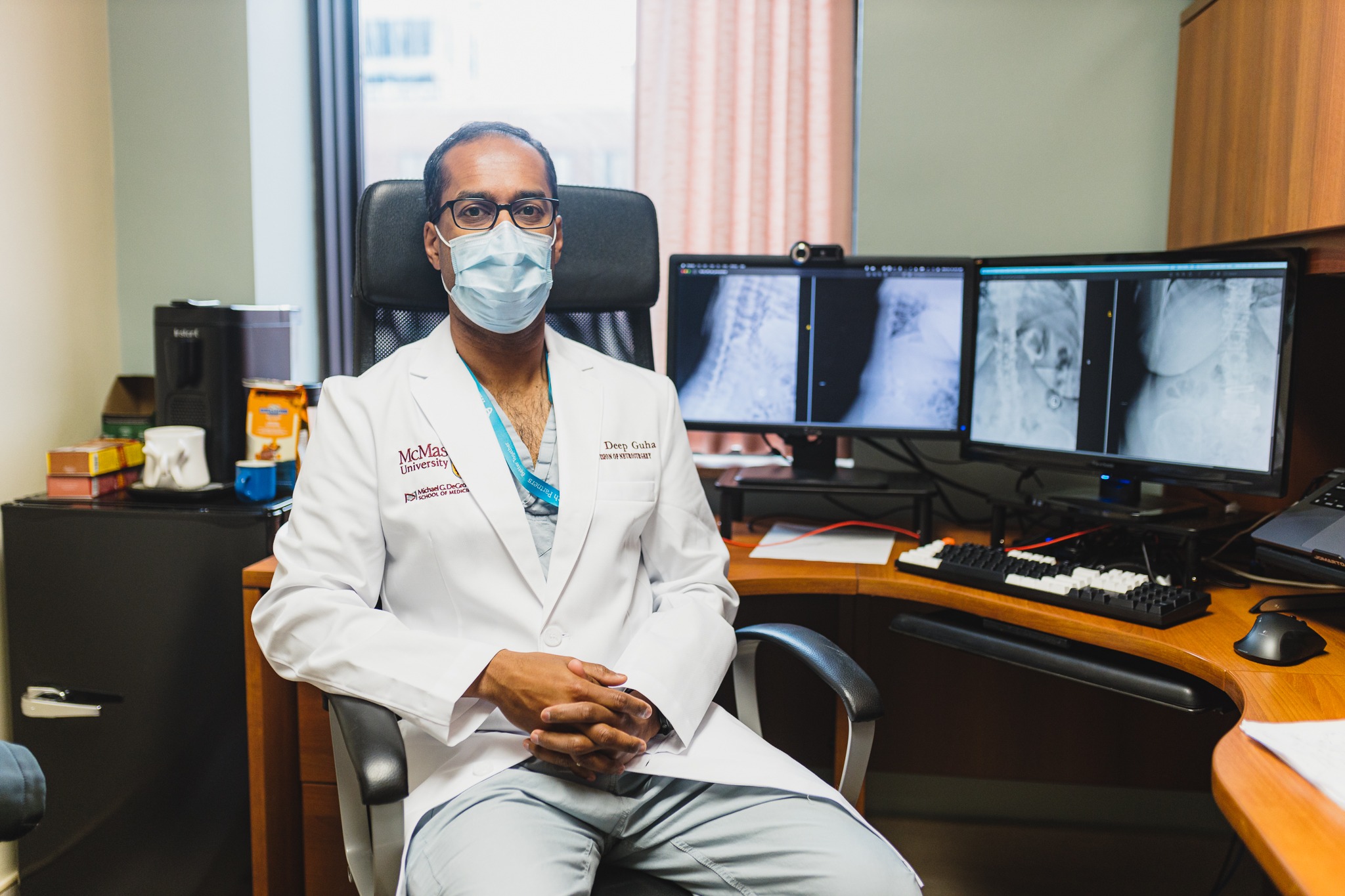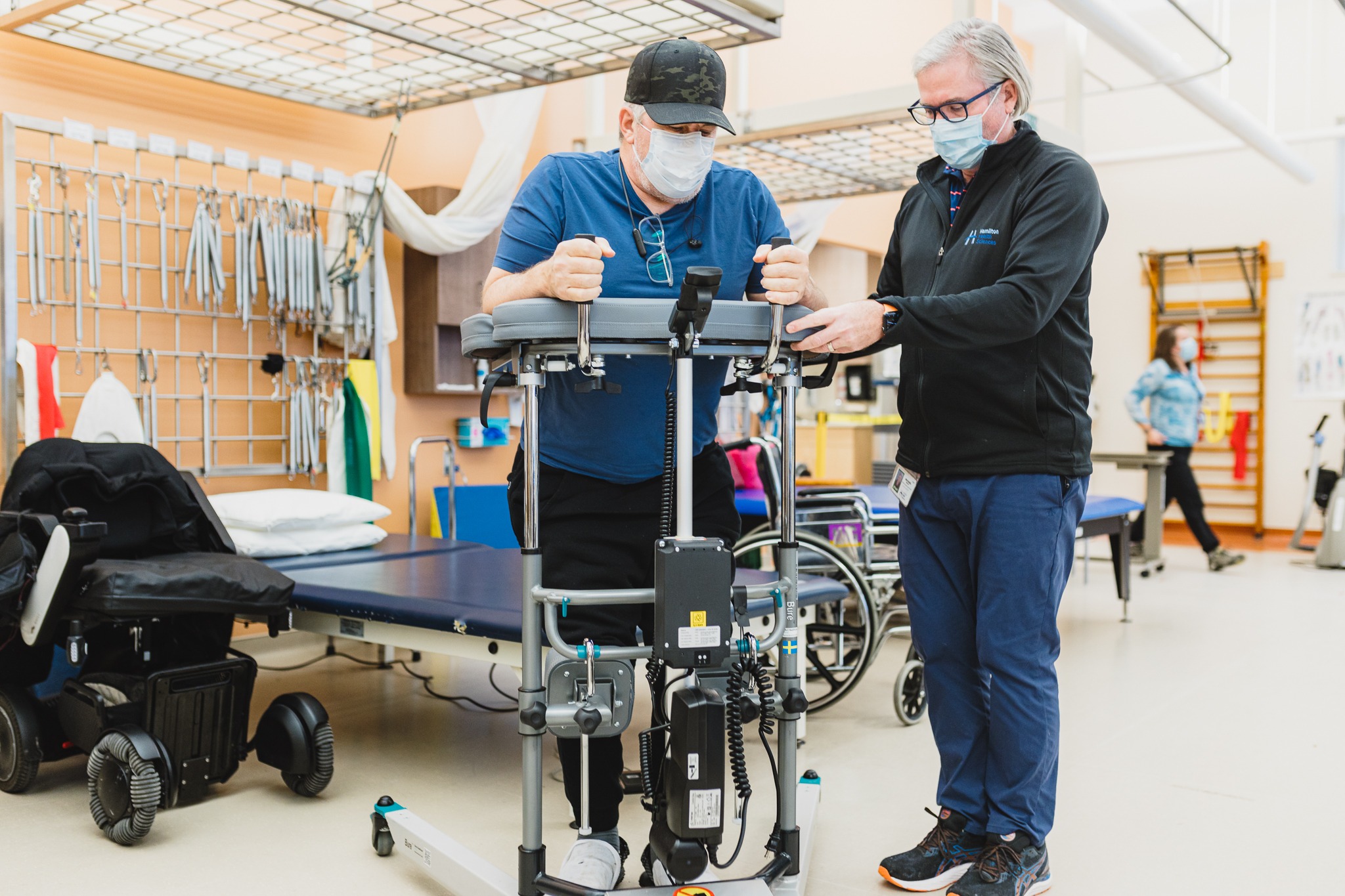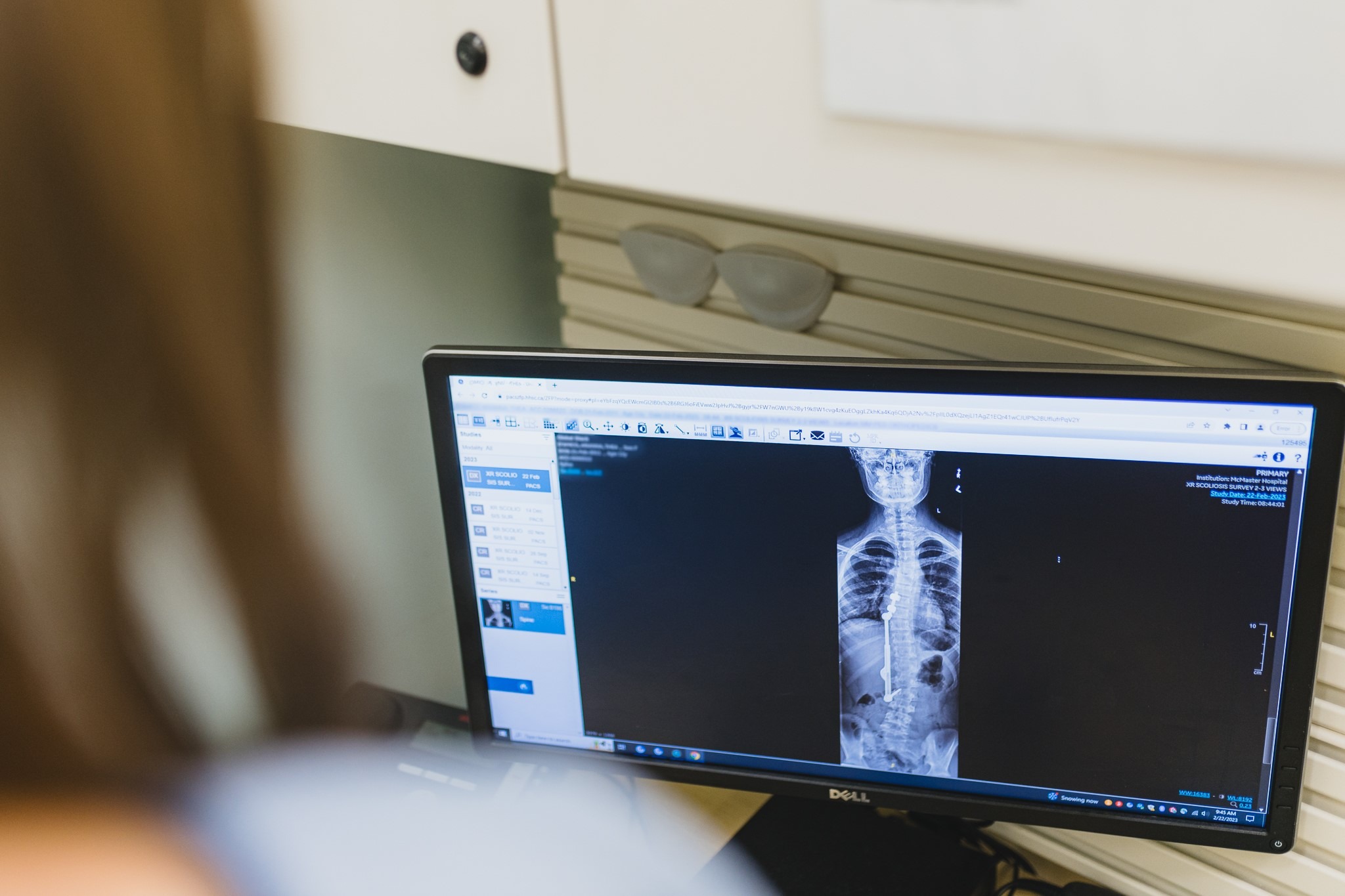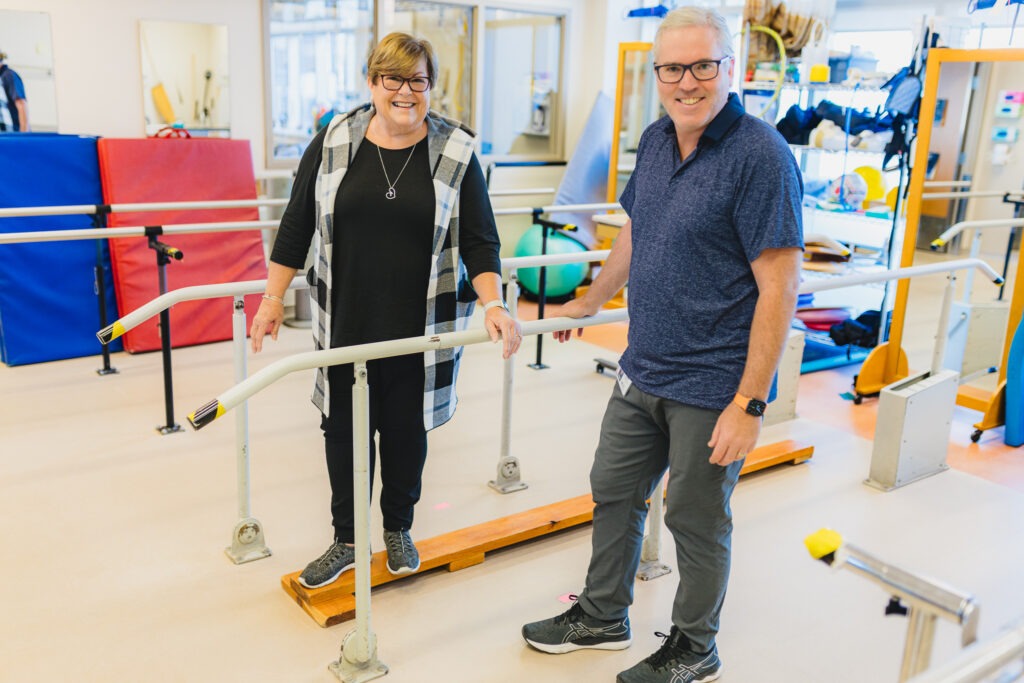
Taking pains to solve a lower back mystery
Niagara Falls resident Angela Sage has high praise for the Hamilton Health Sciences (HHS) teams that made it possible for her to go from a wheelchair to walking again in just a few weeks.
“I’ve really come a long way, from struggling to take a step to once again walking.” — Angela Sage, patient
“They gave me my future back,” says Sage, age 70, who received her diagnosis of a benign spinal tumour at HHS after months of searching for the cause of debilitating lower back pain and weakness in her legs that robbed her of her ability to walk. She also underwent life-changing surgery and rehabilitation at HHS.
Having patients’ backs
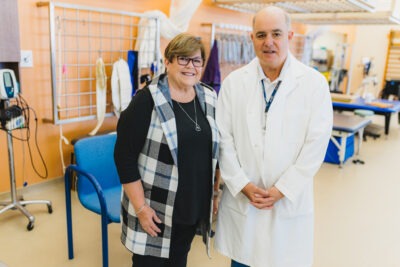
Angela Sage credits Dr. David Dos Santos with solving the mystery of her debilitating back pain.
Sage credits chiropractic specialist Dr. David Dos Santos, the practice lead for the Musculoskeletal Central Intake and Assessment Centre at HHS Hamilton General Hospital, with solving the mystery of what was causing her pain and weakness, and connecting her to life-changing neurosurgery and rehabilitation.
The Musculoskeletal Central Intake and Assessment Centre sees people from across the region with lower back pain and related problems.
This centre is part of a provincial program introduced as a pilot in 2012, and rolled out province-wide in 2018. It’s a faster, more efficient system that helps patients connect to the most appropriate care, says Dos Santos, an expert in musculoskeletal conditions who has seen an estimated 25,000 patients with lower back pain and related conditions during his 30-plus year career.

Sage practises stairs as part of her rehabilitation therapy
“Regional centres provide the right care, in the right place, at the right time.” — Dr. David Dos Santos
“Prior to the establishment of regional centres in Hamilton, Toronto and Thunder Bay, Ontario residents with lower back pain were referred by their family doctors directly to surgeons at their local hospital, leading to lengthy wait times, and fewer than 10 per cent going on to surgery,” says Dos Santos. “This was an inefficient use of surgeons’ time, and led to delays in appropriate care for patients.”
To get a referral, the first step is for patients to see their family doctor or nurse practitioner, and get an appointment for an initial assessment by a community-based chiropractor or physiotherapist.
From there, the chiropractor or physiotherapist can refer patients to a regional centre if a closer look is warranted. In our region, about 15 per cent of patients seen by a community chiropractor or physiotherapist are referred to Dos Santos and directed to the most appropriate care, including diagnostic imaging and surgical consultation, if needed.
Searching for answers
Sage, a retired registered nurse, first noticed something was wrong in September 2022 when she experienced numbness in her left leg that grew increasingly painful. Soon, both legs were affected. Her family doctor ordered an MRI of her lower back for a closer look and she was diagnosed with degenerative disc disease and spinal stenosis, common conditions as people age that can affect their mobility.

“I’ve really come a long way, from struggling to take a step to once again walking,” says Sage.
“But it turned out that this wasn’t the cause of my pain and weakness,” says Sage, whose mobility grew increasingly worse as she struggled to walk and had several falls.
In search of answers, her family doctor referred her to a back assessment clinic in Niagara, and from there she was referred to Dos Santos.
“Dr. Dos Santos took one look at my earlier MRI results and immediately knew that my symptoms weren’t related to my lower back, even though that’s where I felt pain,” says Sage, who met with him in April.
Suspecting a benign tumour in her upper back was the root cause of symptoms, Dos Santos personally escorted Sage to the hospital’s emergency department, with instructions for an MRI of her upper back.
“Dr. Dos Santos told me not to leave the emergency department without an MRI, even if I had to wait a long time,” recalls Sage, who waited several hours and got the MRI that evening.
The MRI confirmed Dos Santos’ suspicions. Sage had a spinal tumour on her upper back that was triggering her symptoms, and needed surgery to remove it.
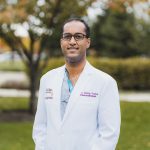
HHS spinal neurosurgeon Dr. Daipayan (Deep) Guha performed surgery to remove Angela Sage’s tumour.
She was admitted to hospital and underwent surgery a few days later to remove the benign tumour. “I want to say thank you to my neurosurgeon, Dr. Deep Guha, and the spinal rehab physio departments that helped me get my mobility back after surgery,” says Sage.
Road to recovery
Sage’s recovery included an eight-week stay at the HHS Regional Rehabilitation Centre next to HGH, where she underwent physiotherapy twice a day. She was discharged from the RRC in late June, and continues to visit twice a week for physiotherapy.
“The team at the Regional Rehabilitation Centre has been fantastic,” says Sage. “By the middle of July, I no longer needed the cane.” Now that she’s walking again, she’s looking forward to travelling with her husband, and playing with their grandchildren.
“I’ve really come a long way, from struggling to take a step to once again walking,” says Sage. “I’m so thankful to Dr. Dos Santos, Dr. Guha, and everyone at the Regional Rehabilitation Centre who helped me. Because of them I finally have my life back. And if I can get one message out to others with lower back pain, it’s that the source of pain and where it’s felt don’t always line up. A closer look may be needed.”

